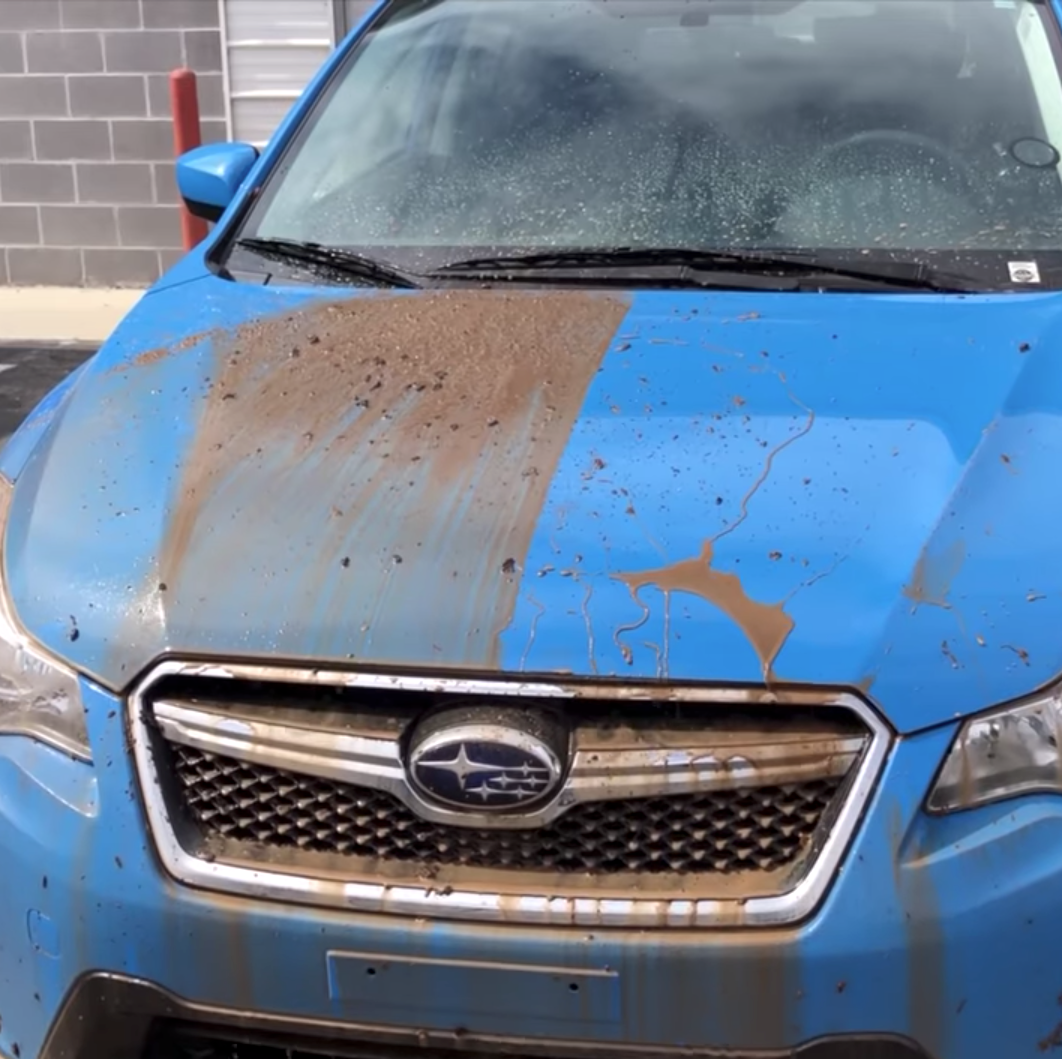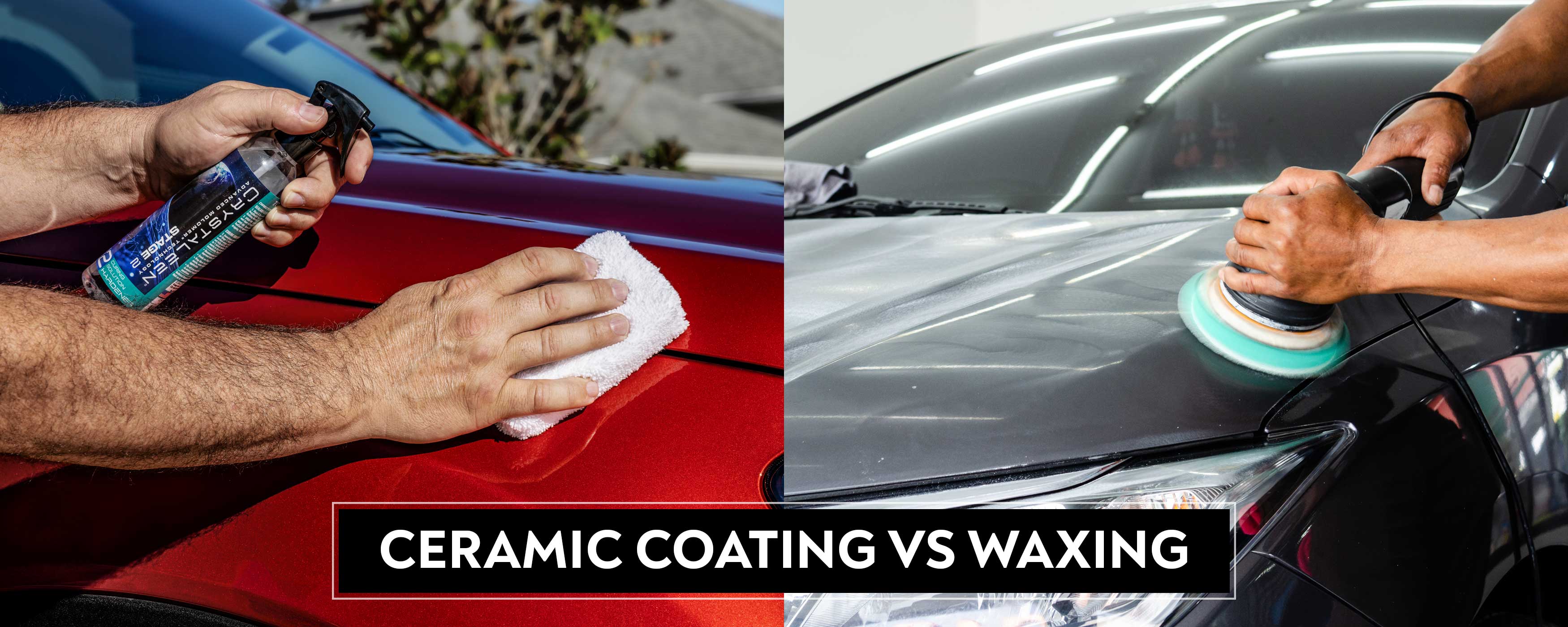Ceramic Coating vs Traditional Wax: Which Offers Better Protection?
Ceramic Coating vs Traditional Wax: Which Offers Better Protection?
Blog Article
Ceramic Layer vs. Traditional Wax: Which Provides Better Long-Term Security?
The discussion between ceramic coatings and traditional wax for automobile security has actually garnered significant interest amongst automobile fanatics and specialists alike. Ceramic layers flaunt remarkable longevity and resistance to environmental aspects, yet the complexity of their application raises inquiries concerning access and usefulness.
Introduction of Ceramic Coating
Ceramic coating has actually gotten substantial popularity among automotive enthusiasts and detailers alike because of its advanced protective qualities. This innovative modern technology is made to develop a long lasting, hydrophobic shield over a car's paint surface, substantially improving its resistance to environmental impurities such as dirt, UV rays, and chemical spots. Unlike typical wax, which provides a momentary layer of defense, ceramic layers bond at a molecular degree with the paint, offering resilient sturdiness-- typically prolonging beyond 2 years with proper upkeep.
The application process entails meticulous prep work of the vehicle's surface, consisting of cleansing and brightening to make sure ideal adhesion. When applied, the covering remedies to form a robust layer that not just includes deepness and gloss to the paint but likewise simplifies maintenance. With its hydrophobic residential or commercial properties, ceramic finishing allows water and dust to move off even more quickly, reducing the frequency of laundries and decreasing the risk of swirl marks.
In addition, ceramic finishes are offered in different formulas, allowing customers to select items tailored to their particular requirements and preferences. Generally, ceramic layer stands for a significant improvement in paint security technology, delivering remarkable efficiency compared to traditional choices.
Introduction of Traditional Wax
Traditionally considered as a staple in vehicle treatment, wax functions as a popular option for those seeking a simple approach to improve and shield their automobile's paint - ceramic coating. Automotive wax commonly makes up natural ingredients, such as carnauba, or artificial substances, created to produce a safety layer externally of the paint. This layer not only boosts the automobile's gloss and radiate but also gives an obstacle versus ecological pollutants
The application of wax is typically user-friendly, making it easily accessible for both professionals and Do it yourself enthusiasts. Once used, wax requires a treating period, after which it sets to create a safety covering.
However, while wax is effective for enhancing the aesthetic charm of a lorry, it is very important to note that the protection it uses may demand more constant reapplication contrasted to alternate items, such as ceramic finishes. Generally, traditional wax remains a favored option for those prioritizing ease of use and prompt aesthetic improvement.
Longevity and Long Life Comparison
While both ceramic finishings and conventional wax deal safety advantages for vehicle paint, their resilience and long life vary significantly. Traditional wax, usually made from natural carnauba or synthetic polymers, generally offers a safety layer that lasts about 3 to 6 months. This reasonably brief lifespan requires regular reapplication to maintain optimum protection.
On the other hand, ceramic finishings are crafted from advanced nanotechnology, forming a covalent bond with the paint surface. This leads to a durable, see this website hydrophobic layer that can sustain for 2 to five years, relying on the product and ecological problems. The premium durability of ceramic coatings is connected to their chemical framework, which supplies enhanced resistance to scratches, UV rays, and oxidation.

Protection Against Ecological Aspects
Securing a car's paint from environmental factors is important for keeping its appearance and worth gradually. Autos are regularly revealed to a selection of components, including UV rays, bird droppings, tree sap, acid rainfall, and road gunk, every one of which can jeopardize the stability of the paintwork.
Ceramic coatings supply a robust defense versus these ecological assailants. Unlike typical wax, which can deteriorate quickly under UV exposure, ceramic finishes create a resilient, hydrophobic layer that stands up to the dangerous results of sunshine and ecological contaminants. This sophisticated innovation creates a chemical bond with the car's surface area, using exceptional security that lasts for many years, also in severe problems.
Traditional wax, while less complicated to use, commonly calls for constant reapplication and uses restricted resistance to pollutants and UV rays. With time, it can damage down, leaving the paint at risk to scrapes and oxidation. In comparison, ceramic finishes maintain their safety top qualities longer, dramatically minimizing the risk of paint damages and guaranteeing that the automobile keeps its aesthetic allure. Because of this, ceramic finishes are increasingly identified as the remarkable option for long-lasting defense versus ecological variables.
Application and Upkeep Distinctions
The methods of application and subsequent upkeep for ceramic finishings and traditional wax vary dramatically, impacting the general user experience and performance of each product. Ceramic layers call for navigate to this website an even more complex application procedure, typically including surface preparation that consists of washing, decontaminating, and polishing the car. Once the surface prepares, the ceramic finishing is applied in a regulated setting, often requiring expert experience to ensure correct curing and bonding to the paint.

While both items boost vehicle appearance, the longer-lasting security used by ceramic finishings may validate their first investment, in spite of the even more demanding application procedure. Conversely, typical wax continues to be a popular selection for those seeking a simpler, albeit short-term, service.

Conclusion
Finally, ceramic coatings demonstrate considerable advantages over standard wax in terms of longevity and environmental management. With a life-span prolonging two to five years and premium resistance to UV rays, dirt, and chemical spots, ceramic coatings offer an extra reliable remedy for long-lasting car maintenance. Although the application process may need professional expertise, the resulting cost financial savings and minimized regularity of reapplication underscore the worth of ceramic coverings for those looking for optimal lorry security.
The dispute between ceramic finishes and typical wax for lorry protection has gathered substantial attention among vehicle enthusiasts and specialists alike. Unlike standard wax, which provides a short-lived layer of protection, ceramic finishings bond at a molecular level with the paint, offering lasting longevity-- usually expanding beyond two years with proper maintenance.
While both ceramic finishes and typical wax offer protective benefits for auto paint, their toughness and longevity differ significantly. For auto fanatics looking for lasting security, ceramic coverings offer an engaging benefit over traditional wax products.
In verdict, ceramic finishings show substantial advantages over standard wax in terms of sturdiness and environmental protection.
Report this page